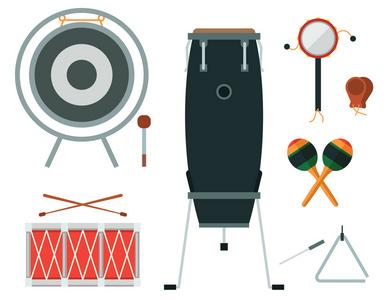音乐为主题的作文
Exploring the World of PercussionBased Music
Percussionbased music, often centered around the dynamic and rhythmic sounds of drums and other struck instruments, has a long and diverse history in cultures around the world. From the traditional beats of African djembe drums to the intricate rhythms of Latin American samba, percussion music offers a captivating blend of melody and rhythm that can energize and uplift listeners.
Within the realm of percussionbased music, there exists a wide array of genres and styles. From the explosive energy of rock drumming to the subtle nuances of jazz percussion, each genre offers its unique take on the power of rhythm. Traditional music from regions such as Asia and the Middle East also showcase the rich tapestry of percussive traditions that have been passed down through generations.
In the modern music landscape, percussion continues to play a vital role in shaping the sound of contemporary genres. Electronic music, for example, often incorporates sampled percussion sounds to create intricate beats and textures. Experimental artists have pushed the boundaries of percussion, utilizing found objects and unconventional instruments to create avantgarde soundscapes.
One of the most fascinating aspects of percussionbased music is its ability to transcend cultural boundaries and bring people together through rhythm. Whether it's the infectious grooves of Brazilian carnival music or the hypnotic beats of Indian tabla, percussion has the power to evoke emotions and connect individuals in a shared musical experience.
If you are interested in exploring the world of percussionbased music as a musician, here are some tips to help you on your journey:
1. Learn from the Masters
Study the techniques of renowned percussionists across different genres. Take inspiration from their playing styles and incorporate elements into your own practice.
2. Practice Regularly
Consistent practice is key to mastering any instrument, and percussion is no exception. Set aside time each day to work on your rhythm, dynamics, and coordination.
3. Experiment with Different Instruments
Don't limit yourself to just one type of percussion instrument. Try out a variety of drums, cymbals, and other percussive tools to expand your sonic palette.

4. Collaborate with Other Musicians
Music is often a collaborative art form. Seek out opportunities to play with other musicians to develop your ensemble skills and learn to groove with different styles.
Whether you are a seasoned percussionist or someone looking to explore the world of rhythm and beats, percussionbased music offers a vibrant and diverse playground for musical expression. Dive into the rich tapestry of percussive traditions from around the globe, and let the power of rhythm guide you on a musical adventure like no other.
